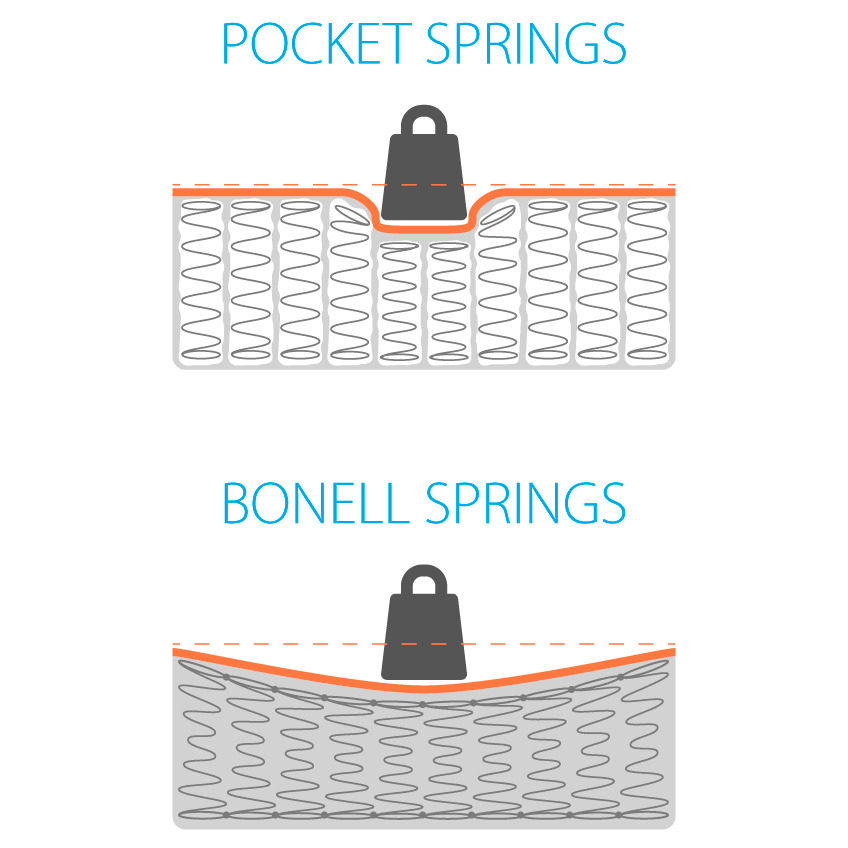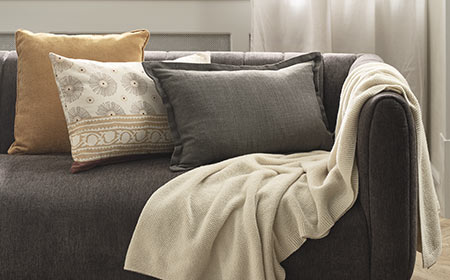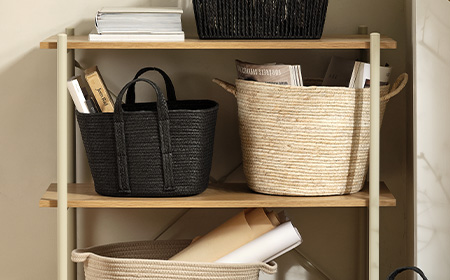When you buy a new bed, you need to choose the right firmness. Beds and mattresses have different firmness levels. You can choose the firmness that specifically matches your own personal needs in terms of support, comfort, sleeping position and much more.
In this article, you can read more about bed firmness and what the different levels of firmness will mean for you.
Among other things, you will learn:
- What does it mean when a bed is firm or soft?
- Which types of beds are generally the firmest?
- Which types of beds are generally the softest?
- How do you decide what firmness is best for you?
Firm or soft bed? It's all about comfort and feeling
When it comes to selecting a bed with the right firmness, you want to pay close attention to how comfortable it makes you feel.
How firm should your bed be to give you the most comfort in your preferred sleeping position? When we talk about sleeping position, we really mean the position you are in when you first fall asleep. As a rule of thumb, if you fall asleep on your side you should have a relatively soft bed with good depth. If you fall asleep on your back, you should have a firmer bed. With the right firmness, you'll more quickly fall into a deep sleep and feel more rested when you wake up in the morning.
At JYSK, we have three different firmness levels for our beds:
- Extra firm
- Firm
- Medium
In an extra firm bed, you primarily lie on top of the mattress. In a medium bed, you sink further down into the bed. If you first try lying on an extra firm bed and then switch over to a medium bed, you'll notice a significant difference.
Read our guide to choice of mattress.
Sleeping position
Your sleeping position – the position in which you feel the most comfortable and fall asleep quickest – is an essential factor in your bed firmness choice. The difference between the three levels of firmness is most obvious when you lie on your side. In the following table, you can how your preferred sleeping position affects which firmness you should select.
. | Back | Side | Stomach |
Which mattress to choose | A mattress that is firm or extra firm | A mattress that is medium firm | Find a mattress that makes it more comfortable to sleep on your back or side |
Advantages | Prevents neck and back pain Minimises acid reflux | Reduces snoring Good during pregnancy | . |
Disadvantages | Increases the likelihood of snoring | Pressure on shoulders | Not optimal sleeping position Creates pressure on your back, lumbar area, and neck |
Support needs | Lower back support | Support for shoulders and hips | Stomach sleeping can be an indicator that your current mattress is either too firm or too soft |
Your weight and the firmness of your bed
The more you weigh, the firmer your bed should be. By selecting the right firmness, you'll avoid sinking too far into your mattress, which can cause you to lie in an unhealthy sleeping position.
In relation to your weight and a bed's firmness, the rule of thumb is as follows:
- You weigh less than 75 kg: Your mattress should be medium firm
- You weigh between 75-95 kg: Your mattress should be firm
- You weigh more than 95 kg: Your mattress should be extra firm
In recent years, many people have come to believe that soft beds by definition are ergonomically undesirable and harmful for your back. But that's not completely correct. When you buy a bed, don't be afraid to choose a softer model if that's the firmness that suits you best.
"It's a misunderstanding that a bed should absolutely not be soft. If you fall asleep on your side, it's actually quite important that you can sink into the bed and get to the deep shoulder zones. A bed should of course have some firmness to it, but firmer is not necessarily better. You should choose the firmness that fits your unique sleeping style."
– Peter, Category Manager, JYSK
The firmness of different bed types
When you're ready to buy a new bed, you'll have different types of bed to choose from:
- Continental bed
- Spring mattress in a bed frame
- Foam mattress in a bed frame
As a rule of thumb, the firmness of the different bed types can be ranked as such from most to least firm:
- Foam mattress in a bed frame
- Spring mattress in a bed frame
- Continental bed
With three mattress layers, a continental bed can create wonderfully deep comfort. In principle, a continental bed could also be made into a firm bed construction but three mattresses are ideal for creating deep comfort and support that can envelop your body. A continental bed is ideal for side sleepers.
Both a spring mattress and a foam mattress in a bed frame are firmer than a continental bed. The latter is typically the firmest type of bed. Due to its springs, a spring mattress isn't quite as firm as a foam mattress.
Top mattress, filling and springs
The above ranking is a good benchmark for determining the firmness of the various bed types. But the list is not set in stone. There can be variations in the construction of the beds and mattresses that can make a bed feel firmer or softer than how that particular bed type normally feels. That's why it's important to be aware of the parts of the bed that have the biggest impact on its overall firmness:
- Top mattress: The feeling of firmness is directly related to the top mattress. It is the top mattress, after all, that you will lie directly on.
- Springs: Your bed's firmness can vary quite a bit depending on the type of springs it has. For example, pocket springs move independently of one another, which creates more comfort zones to give your body support and deep comfort. The more price-friendly bonell springs, on the other hand, create a firmer surface but don't provide the same deep comfort as pocket springs. The type of spring in your mattress, therefore, has a significant influence on your bed's firmness.

- Filling: Whether your bed feels firm or soft also depends on the mattress's filling. The filling is the material that surrounds the mattress's springs. A thin layer of memory foam is an example of a filling type that helps make a bed feel softer and deeper. High-resilience foam, on the other hand, has higher fill power and a firmer feel.
Bed firmness for back problems
If you suffer from back problems – or want to prevent the development of back problems – it's particularly important to choose a bed with the correct firmness. Otherwise, you risk that the bed can worsen your discomfort.
There are a few rules of thumb to follow:
- The heavier you are, the firmer your mattress should be.
- Your spine should be in a straight line when you lie on your side. Your spine shouldn't bend, as that causes strain on your back. Have your partner or a friend come with you when you are shopping for beds so that they can see your spine when you try out a bed.
- Another practical tip for testing a bed: Lie on the mattress on your back. Ask a friend or a partner to place a hand under your lower back. If it's easy to slide the hand under, the mattress is too firm. If the hand has to be forced in, the mattress is too soft. If there's an even amount of pressure between the small of your back and the mattress, the mattress has the correct firmness for your body.
- When you test a bed, be sure to lie in it for at least 15-30 minutes. And make sure you take any jacket or coat off before you try the bed. If you have bulky clothes on, it can be difficult to truly tell how a bed feels.
Firm or soft bed? The answer is individual
There's no right or wrong bed firmness. The correct firmness is always a matter of individual needs. If you follow the advice in this article, you have already taken a major step toward choosing a bed that has the best firmness for your specific needs. Always remember to try a bed before you buy it. Visit your local JYSK store and be sure to make the right choice.





